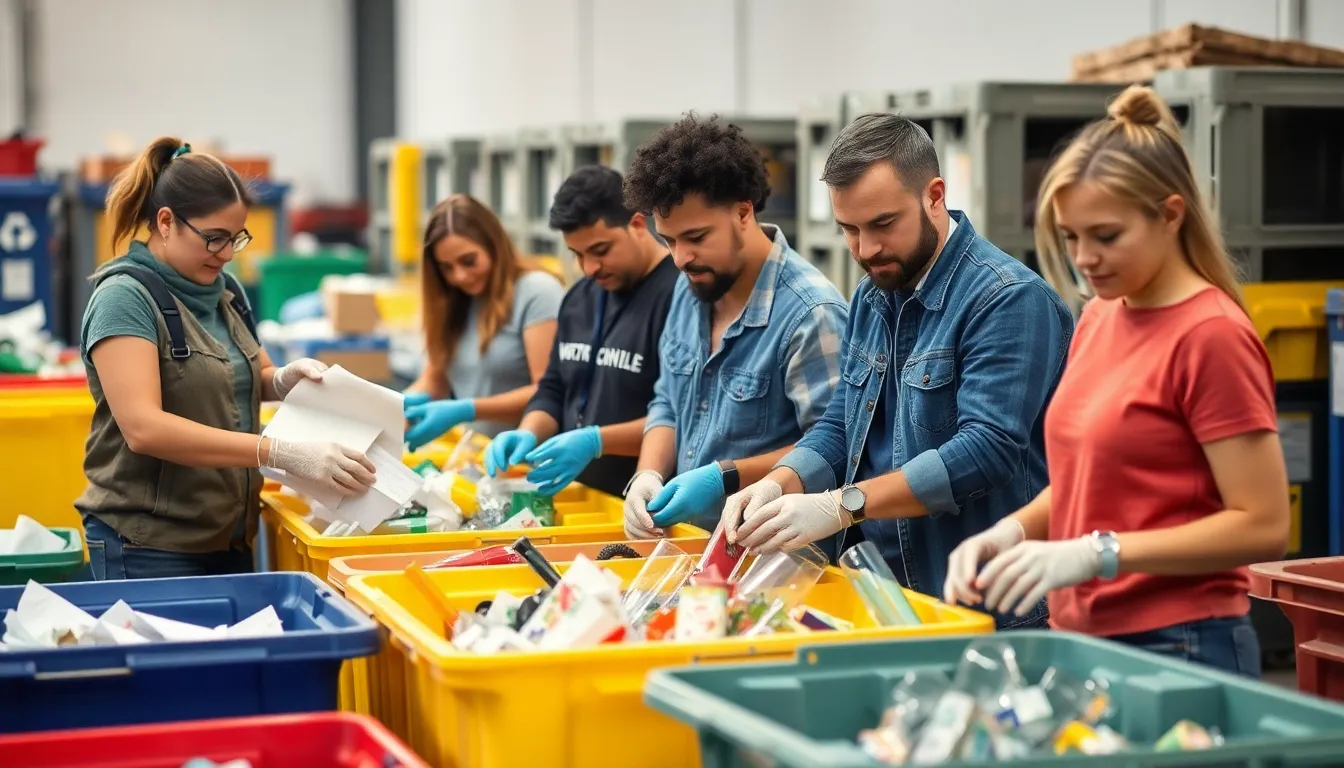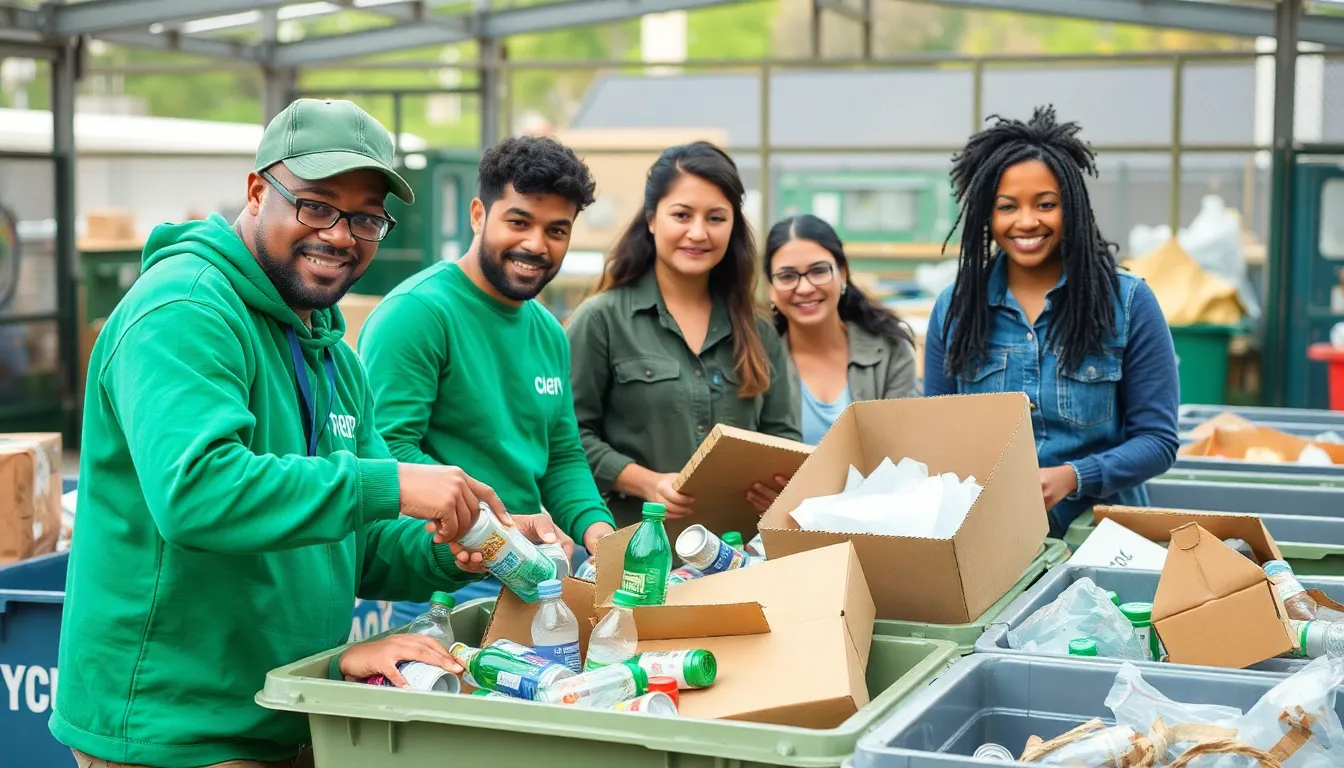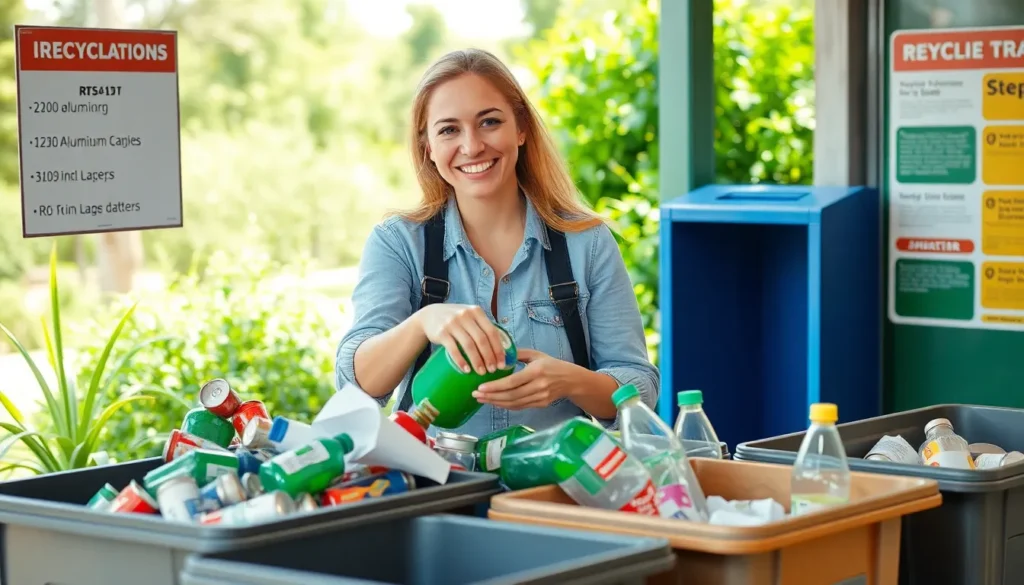Recycling might sound like a chore, but it’s actually a superpower waiting to be unleashed. Imagine turning that empty soda can into a shiny new bike or transforming yesterday’s pizza box into a trendy notebook. Not only does recycling help save the planet, but it also gives you the chance to flex your eco-friendly muscles while impressing friends with your newfound knowledge.
Table of Contents
ToggleImportance Of Recycling
Recycling plays a crucial role in environmental sustainability. It conserves natural resources, reducing the need for raw materials. Each time materials like aluminum and paper are recycled, it cuts down on energy consumption and greenhouse gas emissions.
Landfills experience less strain when recycling practices are implemented consistently. With reduced waste, communities can lower their pollution levels, creating cleaner surroundings for all. This, in turn, contributes to improved public health.
Moreover, recycling supports the economy. New jobs are created in recycling facilities and collection services. The recycling industry has shown a significant growth rate, reflecting an increased commitment to sustainable practices.
Educational benefits also arise from recycling initiatives. Schools often implement programs that teach students about environmental impacts. Understanding the importance of recycling fosters eco-conscious behaviors in younger generations.
Environmental preservation becomes a shared responsibility when individuals engage in recycling. Everyone can contribute to healthier ecosystems by following simple recycling practices at home and in the workplace. Using creative methods to repurpose items makes recycling an even more appealing choice.
Awareness campaigns can increase public participation in recycling programs. Community efforts often result in more extensive recycling systems and reduce contamination in recycling streams. When more people actively participate, the overall impact on local and global environments improves significantly.
Ultimately, embracing recycling habits nurtures a sustainable future and enhances community pride. The act of recycling transforms mundane tasks into opportunities for positive change.
Common Materials To Recycle


Recycling common materials punctuates efforts in environmental sustainability and resource conservation. Each material plays a vital role in reducing landfill burdens.
Paper Products
Paper products encompass newspapers, magazines, and cardboard boxes, among others. Recycling these items conserves trees and reduces energy use. Collectively, recycling one ton of paper saves approximately 17 trees and 7,000 gallons of water. Proper separation of paper from contaminated materials ensures it remains recyclable. It’s crucial to avoid greasy pizza boxes as they complicate the recycling process.
Plastics
Plastics hold significant recycling potential, particularly types one and two. These include water bottles and milk jugs, respectively. Recycling plastics reduces fossil fuel reliance and cuts greenhouse gas emissions. Approximately 30% of recyclable plastics get diverted from landfills. Cleaning and drying plastics before recycling improves processing efficiency. Local guidelines dictate what plastic types are accepted, making it essential to check specifics to avoid contamination.
Glass
Glass containers represent another key recyclable material. Recycling glass conserves raw materials and reduces energy consumption. For instance, recycling one ton of glass can save over 1,300 pounds of natural resources. Collecting clear, green, and brown glass together harbors benefits, although ensuring no breakage occurs is vital. Rinsing out containers before recycling eliminates contaminant issues.
Metals
Metals, particularly aluminum and steel, are valuable in recycling efforts. Recycling aluminum saves 95% of the energy required to create new aluminum from raw materials. Steel recycling contributes to reduced mining and energy use, leading to significant environmental gains. Recycling one ton of metal can prevent up to 2,000 pounds of carbon dioxide emissions. Storing metals in their designated recycling bins aids in maintaining material purity and efficiency in the recycling process.
Effective Recycling Tips
Recycling effectively requires some preparation and understanding of local guidelines. These tips enhance recycling efforts and ensure a positive impact on the environment.
Preparing Materials For Recycling
Cleanliness plays a significant role in recycling. Rinsing containers removes residues that can contaminate recycling streams. Removing labels from glass jars makes processing easier. Flattening cardboard boxes saves space in recycling bins, allowing for more efficient collection. Additionally, sorting materials into designated bins prevents cross-contamination. Educating family members about these practices fosters a collective responsibility for recycling.
Knowing Your Local Recycling Guidelines
Understanding local recycling guidelines ensures compliance and maximizes efficiency. Different regions may have varying rules regarding what materials can be recycled. Familiarize yourself with accepted items in your area, such as plastics, paper products, and metals. Many municipalities provide online resources or community flyers detailing these guidelines. Participating in local recycling programs and adhering to sorting rules helps reduce contamination. Staying informed about changes in regulations supports effective recycling and contributes to community sustainability.
Creative Ways To Recycle
Repurposing old furniture can breathe new life into a living space. Individuals can transform an unused dresser into a stylish TV stand with a coat of paint. Using an old ladder as a bookshelf adds rustic charm to any room.
Crafting homemade planters from tin cans enhances indoor gardening. Cutting the tops off and painting them creates vibrant displays for herbs. Recycling glass jars can serve as storage for small items or as decorative candle holders.
Kids can engage in fun art projects using recyclable materials. Cardboard boxes can become castles or spaceships, igniting imaginative play. Paper towel rolls can transform into binoculars or telescopes for creative exploration.
Upcycling clothing offers sustainable fashion alternatives. Turning an old t-shirt into a tote bag requires minimal sewing skills and showcases creativity. Creating patchwork quilts from fabric scraps preserves memories while adding warmth.
Friends may host a recycling swap to exchange items they no longer need. Offering items such as books or clothes encourages community interaction. Organizing local clean-up events promotes recycling awareness while fostering connections among participants.
Establishing a compost bin at home supports waste reduction and enriches gardens. Collecting kitchen scraps provides nutrient-rich soil for plants, demonstrating recycling’s broader benefits.
Hosting workshops on recycling crafts can educate others and inspire creativity. Sharing knowledge about effective recycling techniques fosters a sense of community responsibility.
Adopting recycling habits is a vital step toward a sustainable future. By making small changes in daily routines individuals can significantly impact their communities and the environment. Engaging in creative recycling not only showcases eco-consciousness but also inspires others to participate in this essential practice.
Awareness and education play crucial roles in fostering a recycling culture. When people understand the benefits and guidelines they’re more likely to contribute effectively. Every recycled item counts toward conserving resources and reducing waste.
Ultimately embracing recycling is more than just a task; it’s a commitment to nurturing a healthier planet. By prioritizing recycling individuals can transform their homes and communities into cleaner and more vibrant spaces.





